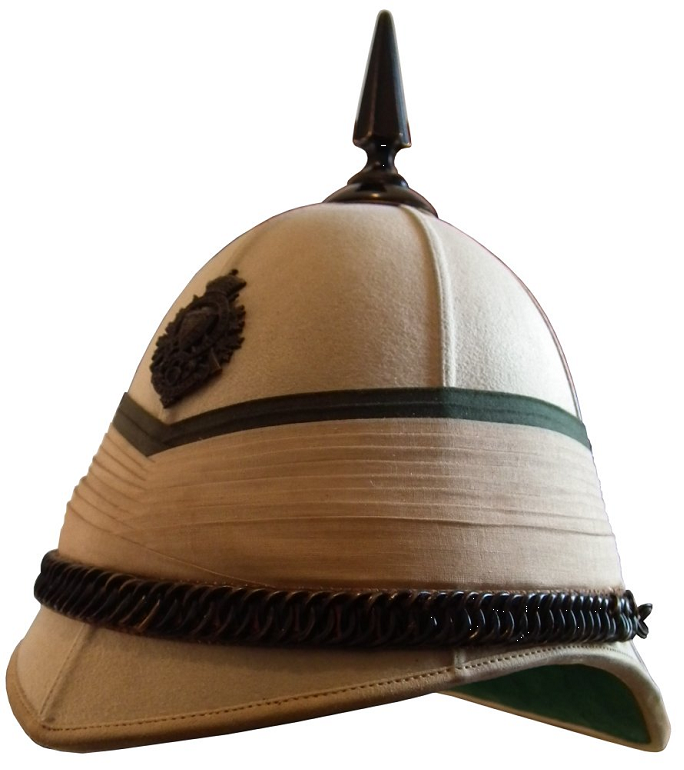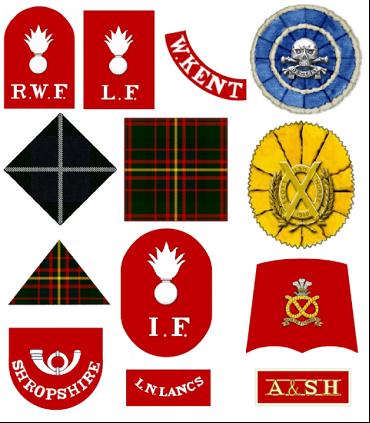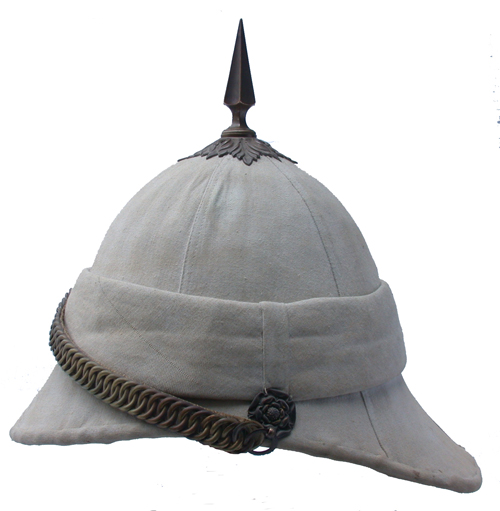 The helmet is attributed to Major James Skitt Matthews, born in 1878 in Wales, and died in 1970 at the age of 92 in Vancouver. James Skitt Matthews was a well known figure around the Vancouver area, and was appointed Vancouver’s first archivist in 1933. He was also a much respected historian of the city and amassed a huge collection of photos relating to Vancouver. In his early life he joined a local militia unit in 1903 and at the outbreak of war in 1914 was transferred to the Regular Army and fought with The Duke of Connaught’s Own Rifles throughout 1916 to 1918 during World War One. His tough no nonsense style made him something of a hero to his men in the trenches. Continue reading
The helmet is attributed to Major James Skitt Matthews, born in 1878 in Wales, and died in 1970 at the age of 92 in Vancouver. James Skitt Matthews was a well known figure around the Vancouver area, and was appointed Vancouver’s first archivist in 1933. He was also a much respected historian of the city and amassed a huge collection of photos relating to Vancouver. In his early life he joined a local militia unit in 1903 and at the outbreak of war in 1914 was transferred to the Regular Army and fought with The Duke of Connaught’s Own Rifles throughout 1916 to 1918 during World War One. His tough no nonsense style made him something of a hero to his men in the trenches. Continue reading
Category Archives: Puggaree
The Gloucestershire Back Badge
 During the Battle of Alexandria in 1801 the 28th Foot (North Gloucestershire) Regiment was attacked from behind by the French. The commanding officer Lt. Col. Paget then gave the famous order “Rear rank, 28th. Right about face.” With consummate discipline the rear rank turned to face the attacking French and at short range fired one devastating volley which caused heavy casualties and forced the enemy’s withdrawal.
During the Battle of Alexandria in 1801 the 28th Foot (North Gloucestershire) Regiment was attacked from behind by the French. The commanding officer Lt. Col. Paget then gave the famous order “Rear rank, 28th. Right about face.” With consummate discipline the rear rank turned to face the attacking French and at short range fired one devastating volley which caused heavy casualties and forced the enemy’s withdrawal.
For this action the regiment was allowed the distinction of wearing badges on both the front and rear of the head-dress. Only the two regular battalions of the Gloucestershire Regiment, formed by the amalgamation of the 28th and 61st Regiments which occurred as a result of the Cardwell/Childers reforms of the British Army in 1881 were allowed this distinction. Militia and Volunteer battalions were not allowed this distinction. Continue reading
Sun Helmets in the Royal Navy
Although not officially established as part of a tropical uniform for officers until 1885, the sun helmet was used unofficially as far back as the Indian Mutiny (1857-1858). It was described as being a “white helmet with blue pagri.” 1 Continue reading
Some Notes on the Indian Wicker Helmets
Helmets made of wicker were in use in India from, at least, the 1850s and lasted into the early 20th century with units despatched to the Second Anglo-Boer War from India. These helmets and their cork Colonial equivalents were replaced by the Wolseley pattern in the first years of the 20th century and this was completed by 1910. Continue reading
Helmet Flashes in the British Army

Some of the weird and wonderful shapes of helmet flashes often encountered on Foreign Service Helmets and Slouch Hats.
The British army has long used khaki coloured uniforms for its troops. This goes as far back as the Indian Mutiny and possibly before with some regiments of the East India Company’s army. The introduction and use of khaki into the British army is generally attributed to an army officer named W.S.R. Hodson, who later founded the irregular light cavalry, Hodson’s Horse. Continue reading
Ellwood´s Alteration to their own Air Chamber Helmet Patent.
Stuart Bates’ article on “Ellwood’s Air Chamber Helmet” from July 5th 2012 describes Ellwood´s patent for a hat suitable for tropical regions. Whatever the shape – the idea is always executed in the same way. There are two shells that do not meet and form an “air chamber” – ventilated by holes or not – where the air is used as isolation against heat. Theoretically, a fine idea – but, as Stuart notes correctly: “There is no provision for the escape of heat, emanating from the wearer’s head, out of the inner shell which must have lessened the overall effectiveness of the design.” Ellwood´s must have had the same thought and here is an example of an Ellwood helmet where their own patent is altered. Continue reading
British Puggarees 2, 3, 4 and 6 Folds

This Colonial Pattern helmet, of the 49th Ottawa-Carleton Rifles, illustrates the most common form of the puggaree with two folds: front and rear. (Collection of Clive M. Law)
The puggaree (or pagri, pugri etc.) was an addition to the headgear of the British soldier primarily being for protection against sword cuts but also protection from the heat of the sun. Just how effective it was in this latter use is debatable. In its many forms it was also a decorative item and was additionally used to distinguish regiments and corps. The cloth wrapped around the crown of the helmet was most commonly folded over in two places: at the front and the rear. However, examples of the puggaree being folded in three, four and six positions are known to have existed. In this article the six seams of the helmet cover are equated to positions on a clock face with 12 o’clock being the rear seam and 6 o’clock being the front seam etc. Continue reading



